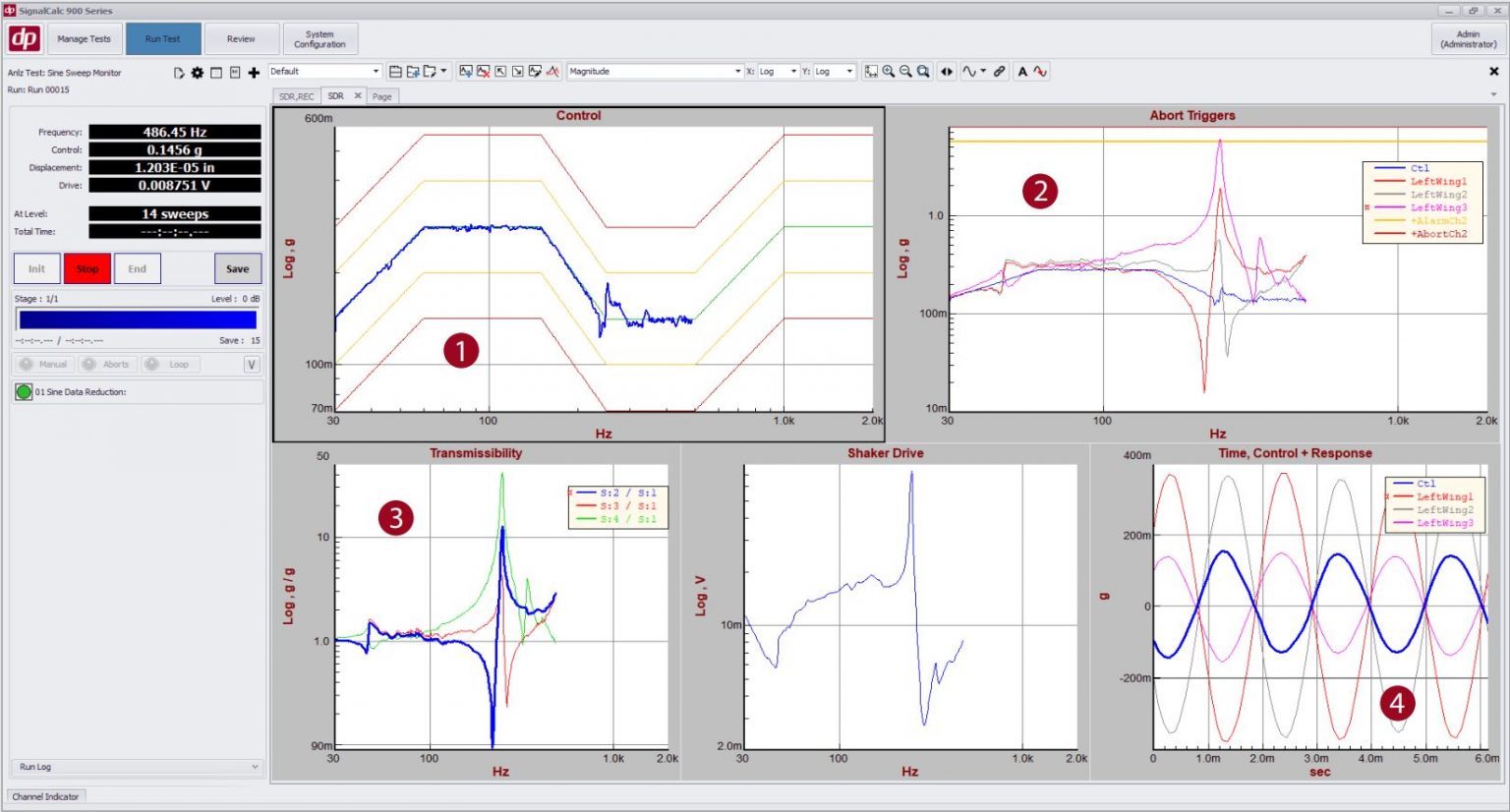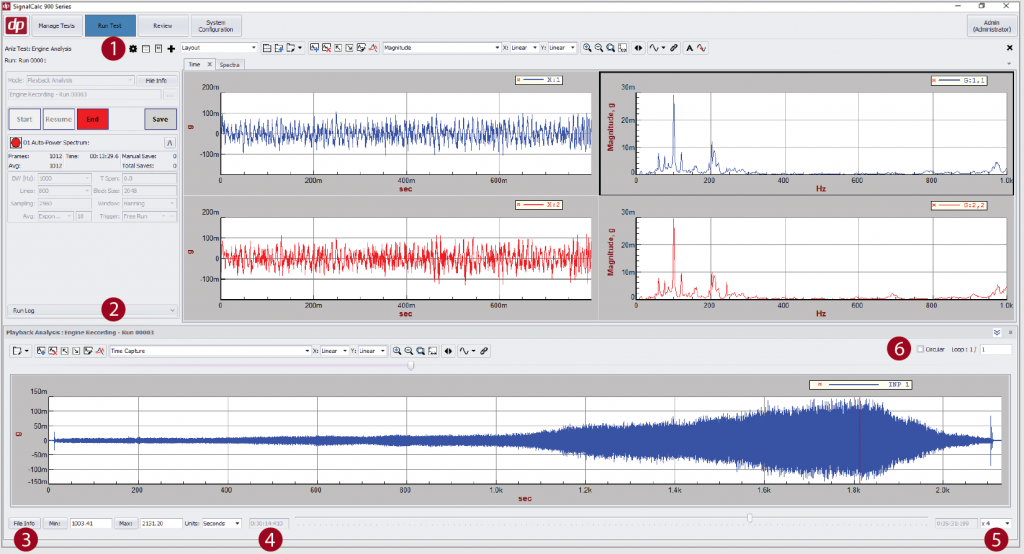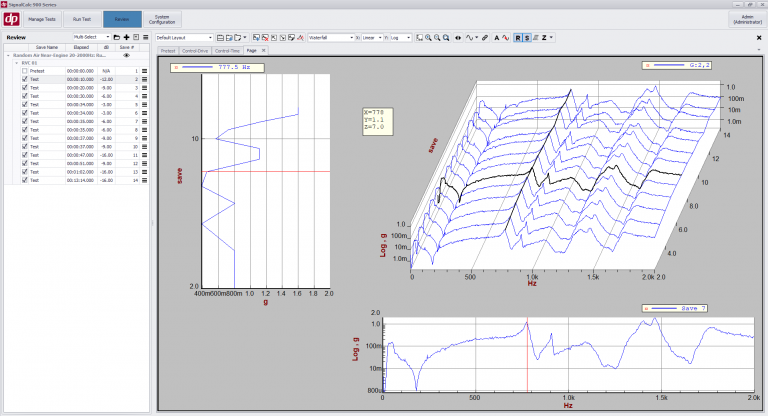Data acquisiton system for satellite qualification
Real-Time Measurements and Recording on Hundreds or Thousands of Channels
Define tolerance limits for Random or Sine tests, and quickly trigger a vibration controller to shut down when a tolerance limit is exceeded. Record time data at up to 216kHz. All on hundreds or thousands of channels simultaneously – no processing or data loss bottlenecks.
Sine Sweep Monitoring System
- Monitor hundreds or thousands of channels during a sine vibration test – using a COLA frequency reference from the vibration controller
- Accurate amplitude/phase measurements (not FFT based)
- RMS/Peak measurement modes available without using an extra input channel
- Math channels (gap free) can be used for moment or summed force computations
- Define tolerance profiles for any channel, including math channels
- Low latency abort triggering – quickly signal the vibration controller to ramp down the test if any tolerance limits are exceeded
- Trigger aborts based on transient detection (gap free)
- Monitor FFTs (on all channels) and even plot them on a waterfall/order plot to visualize harmonic distortion all live during the test.
- Simultaneous time history recording up to 216kHz
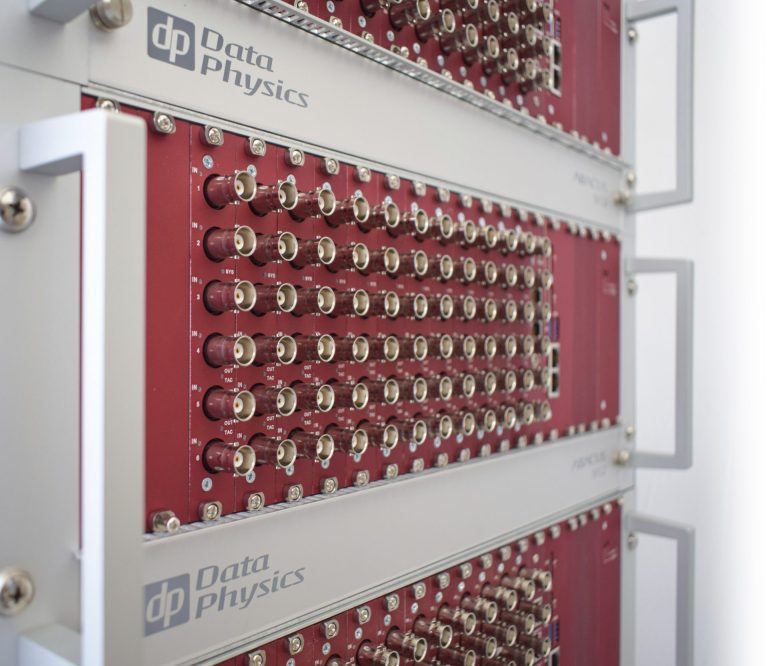
Random Vibration Monitoring System
- Monitor hundreds or thousands of channels simultaneously
- Math channels (gap free) can be used for moment or summed force computations
- Define tolerance profiles for any channel, including math channels
- Low latency abort triggering – quickly signal the vibration controller to ramp down the test if any tolerance limits are exceeded
- Trigger aborts based on transient detection (gap free)
- Measure FFTs at different sample rates or block sizes simultaneously during test. Plot results on a waterfall plot to visualize data live during test
- Simultaneous time history recording up to 216kHz
Abort Triggering
Quickly triggering the vibration controller to abort a test when a response channel has exceeded its pre-defined profile is a critical part of the measurement system. The 900 Series Analyzer can trigger aborts based on:
- Spectrum Monitoring: when pre-defined tolerance limits for a specific channel are exceeded
- Transient Monitoring: when a pre-defined absolute level is exceeded on a specific channel. Transients are monitored gap-free.
- Sine Amplitude: when the sine amplitude (Filtered, RMS, Peak, or other detection type) level is exceeded on a specific channel
When the shaker is controlled with a 900 Series controller, the measurement system’s abort triggering begins ramping down the shaker within milliseconds of the abort condition being detected.
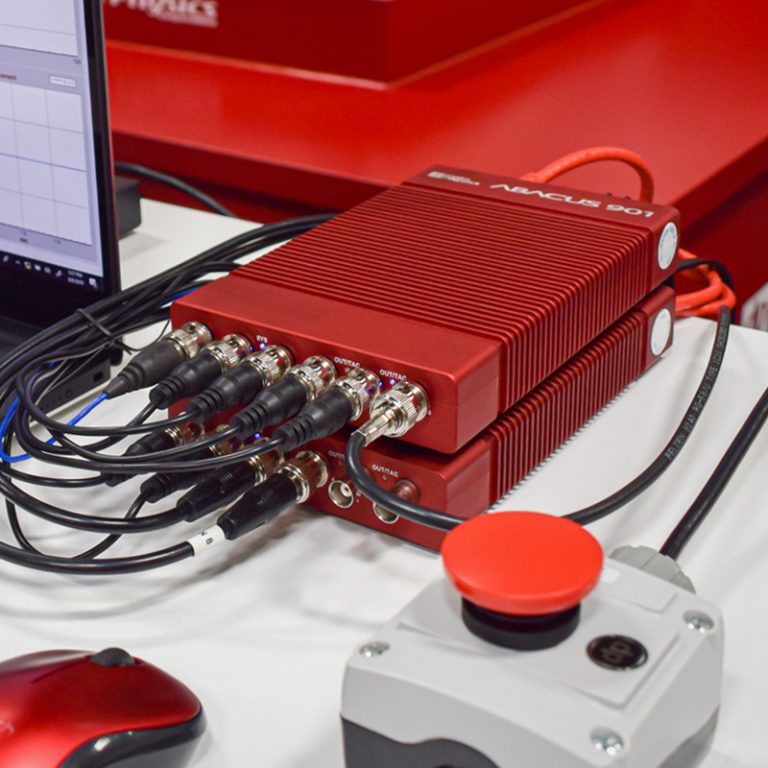
Streamlined Time History Recording
Record the complete time history at up to 216kHz
Record multiple time histories simultaneously, each with a different sample rate
Time histories can be exported to Matlab or other formats automatically, even while the test is still running
The streamlined way the 900 Series exports time histories dramatically reduces the time required to analyze the data recorded during a test.
Distributed System Eliminates Bottlenecks and Protects Data
The 900 Series system is completely distributed – each 6 channel acquisition card has embedded DSPs which perform all measurement processing. Processing power scales indefinitely with the number of channels.
Each 900 Series chassis also contains an on-board solid state disk which stores data from the chassis’ measurement channels during the test. A failure in the host PC or network never leads to data loss.
Multi-Chassis Synchronization – channels in different chassis are kept synchronized through dedicated sync cables, with an industry-leading accuracy of <0.025° @ 2kHz.
Distributed Measurement – Whether monitoring a Random test or a Sine Sweep – data is processed on each 6ch card’s DSPs; making a truly expandable system. The host PC is only used to set up and monitor the measurement.
Data Loss Prevention – During the test, data is stored locally on each chassis. Even in the event of power failure, all the time data leading up to the power loss is saved.
Data Review and Overlays
When a test aborts, quickly identifying the source of the abort requires streamlined data plotting and overlaying capabilities.
The 900 Series Review Mode allows you to overlay data from different saves with a single click. Plot data from multiple saves onto a waterfall. Overlay multiple channels of a time history visually.
All the plotting and comparing capabilities you need are not just built in, but streamlined in the 900 Series software.

